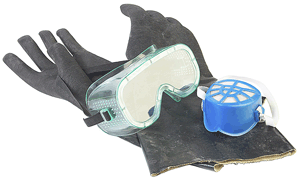Mold and Your Health

Can mold affect your health?
Most types of mold that are routinely encountered are not hazardous to healthy individuals. However, too much exposure to mold may cause or worsen conditions such as asthma, hay fever, or other allergies. The most common symptoms of overexposure are persistent cough, congestion, runny nose, eye irritation, and aggravation of asthma. Depending on the amount of exposure and a person’s individual vulnerability, more serious health effects – such as fevers and breathing problems – can occur, but are unusual.
What is Stachybotrys Chartarum?
Stachybotrys Chartarum (also known as Stachybotrys Atra) is a type of mold that has been associated with health effects in people. It is a greenish-black mold that can grow on materials with a high cellulose content – such as drywall sheet rock, dropped ceiling tiles, and wood – that become chronically moist or water-damaged, due to excessive humidity, water leaks, condensation, or flooding.
How can you tell if Stachybotrys Chartarum is present in your home?
Many molds are black in appearance but are not Stachybotrys. For example, the black mold commonly found between bathroom tiles is not Stachybotrys. Stachybotrys can be positively identified only by specially trained professionals (e.g., mycologists) through a microscopic exam and collected by a hygienist.
Will my health or my child’s health be affected, and should we see a physician?
Infants, the elderly, immune deficient, and people with mild or extreme allergies, including the asthmatic are susceptible to health problems due to mold. If you believe that you or your children have symptoms that you suspect are caused by exposure to mold, you should see a physician. Keep in mind that many symptoms associated with mold exposure may also be caused by many other illnesses or allergies. You should tell your physician about the symptoms and about when, how, and for how long you think you or your children were exposed.

